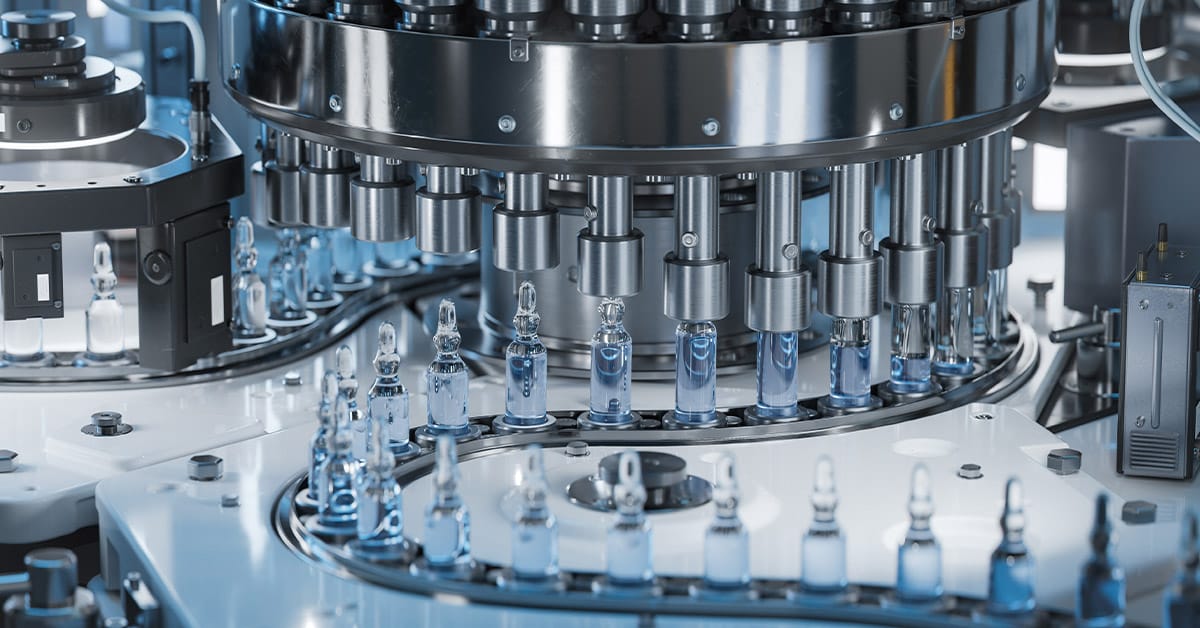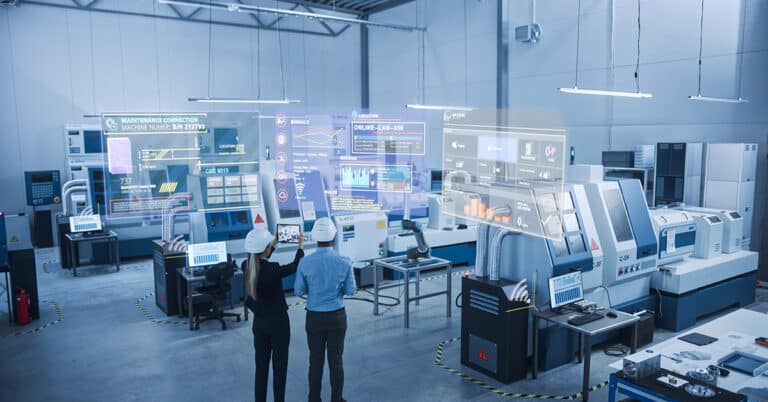Complex products require complex manufacturing processes, and that’s the essence of high-tech manufacturing. It’s an environment that demands precision, speed and efficiency.
A high-tech factory challenges the maintenance function. Machinery and controls are highly sophisticated and often tightly integrated. Contamination must be excluded, and documentation and record-keeping are often mandatory. Downtime must be minimized, and when maintenance work is undertaken, care and precision are essential.
This blog answers the question, “What is high-tech manufacturing?” It provides examples; explores some of the biggest challenges; and discusses relevant maintenance-related strategies, tools and technologies.
High-tech manufacturing industry examples
Manufacturing becomes high-tech when businesses use sophisticated, usually computer-controlled, equipment to produce the product. This is needed when the product requires great precision in manufacturing and the cost of failures or mistakes is high. In many cases, production volumes are high, and operations are automated to drive down costs and reduce product variation. Automation also helps to ensure cleanliness and avoid contamination.
Many industries using high-tech manufacturing are highly regulated to help ensure consumers can use the product safely. Regulation also levels the playing field so there are no cost advantages from cutting corners or taking shortcuts.
Industries meeting these criteria include:
- Aerospace: Encompassing satellite and rocket production as well as military and civilian aircraft and related defense equipment. Product reliability is a primary concern (including quality under this heading), closely followed by manufacturing productivity.
- Automotive: Modern vehicles are extremely complex, especially with electrification, and customer expectations for reliability are very high. The huge investments in automated manufacturing need high volumes to pay back, so utilization measures such as OEE become crucial.
- Pharmaceuticals: Product, much of which is made in high volumes, must be extremely consistent and free from contamination. Automation drives out variability and the potential influence of human line workers. Regulatory oversight is intense.
- Medical devices: This is an industry that deals with advanced materials and demands high levels of product reliability. As with pharma, automation provides a solution, but regulation imposes many demands.
- Semiconductors: Maximizing yields demands extreme levels of cleanliness throughout the manufacturing process. In addition, the scale of capital investment needed requires high volumes and, therefore, high equipment utilization.
High-tech manufacturing considerations
Process and technology mastery is just the price of admission to the high-tech manufacturing world. Sustained success demands competency in maintenance, procurement, supply chain management, quality assurance and every other manufacturing support function.
Challenges to manage include:
- Workforce skills: Sophisticated manufacturing equipment needs a skilled operations and maintenance workforce. Particularly in a time of retirements and labor shortages, businesses must put in place plans to attract and/or develop employees with the necessary abilities and knowledge.
- Compliance: Quality systems must be maintained and followed to help ensure fault-free products, and to minimize warranty issues and returns. Oversight bodies such as the FDA impose strict requirements — including for process control, improvement and documentation — that must be adhered to constantly.
- Product and process development: Only an extensive R&D effort can ensure the new product pipeline is kept full with advances that maintain a leadership position over rivals, and that manufacturing capabilities keep pace.
- Intellectual property: In conjunction with ongoing R&D, the IP portfolio must be managed with care — protecting trade secrets as well as patents to maintain competitive advantages.
- Extended supply chains: Many sophisticated products rely on components and materials sourced from distant and sometimes unstable regions, and supply chains can be vulnerable to disruption. Cobalt, lithium and Taiwanese semiconductors are three material/component examples. The 2021 blockage of the Suez Canal illustrates how even minor incidents can have extensive ramifications.
High tech manufacturing technologies
The manufacturing industry has gone through several periods of radical change. From the steam engine to electrical power to computer-controlled machines, each has enabled step-change improvements in productivity, efficiency and quality. Today, a fourth such revolution is underway: the rapid adoption of digital technologies referred to as Industry 4.0.
This catch-all phrase encompasses three elements: modeling and data acquisition, data analysis, and data-driven actions. It begins with sensing, communication, design, modeling and manufacturing technologies; incorporates advanced analytical tools to make sense of the data being captured; and uses more tools and capabilities to find and implement controls and improvements based on that information.
These Industry 4.0 technologies have far-reaching implications for manufacturing, and especially for those sectors considered high-tech. Here are some examples:
- Industrial IoT: Just as doorbells and thermostats communicate over home networks, a host of sensors are emerging with the ability to measure and communicate conditions in the plant and on the manufacturing equipment. This is enabling improved process control, reduced product variation, increased material yields and lower machine downtime.
- Machine Health Monitoring: Vibration, temperature, pressure, current and lubricant condition are just some of the operational parameters that can be measured and reported. This type and level of data enables continuous, real-time monitoring of machine operations, permitting early identification of impending problems while there’s time to schedule maintenance work, and thus prevent costly breakdowns.
- Cloud & Edge Computing: Operations and maintenance teams now have access to a vast trove of data about machinery and equipment operations and condition. Making sense of this, extracting patterns from the noise, requires intensive analytical capabilities only available in cloud computing systems. However, the cloud can’t provide the millisecond-level response needed for machine and process control, so that is handled by edge devices. These put computing power that identifies trends and exceptions right on the machine, reporting to the cloud as needed for more analysis power.
- AI and Machine Learning: High-tech manufacturing is becoming so complex that it’s impractical or even impossible to write algorithms with the decision-making capabilities needed. As a result, this work is being handed to AI systems. Trained on huge data sets, these identify patterns and make recommendations with more speed and accuracy than would otherwise be possible. An example is their use in predictive maintenance, where AI analyzes machine data to determine future service and repair needs.
- 5G Technology: The growing swarm of IIoT devices threatens to overload hardwired, Wi-Fi and cellular networks. This latest generation of cellular technology is many times faster and so better able to meet the growing needs of Industry 4.0.
Everything depends on maintenance
Many of the products that make aspects of modern life — such as communication, transport and healthcare — possible are extraordinarily difficult to manufacture, especially at scale and to the standards expected. This has resulted in the processes and equipment used to manufacture them becoming increasingly highly sophisticated and ever harder to manage, utilize and maintain.
At the heart of the complexity that is high-technology manufacturing lies the maintenance function. Charged with keeping this equipment operating at peak performance, it needs to use all the tools at its disposal to meet the needs of managers and customers. ATS is ready to be part of the solution, get support.






